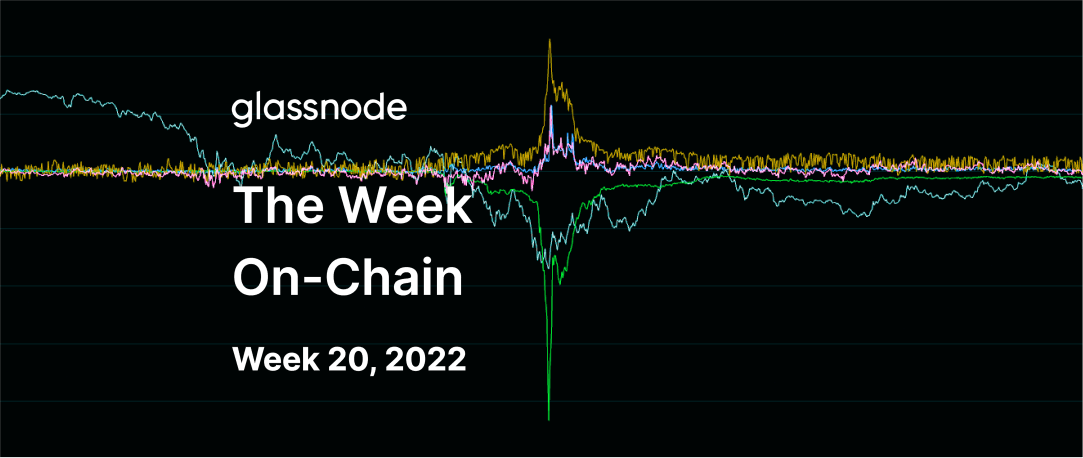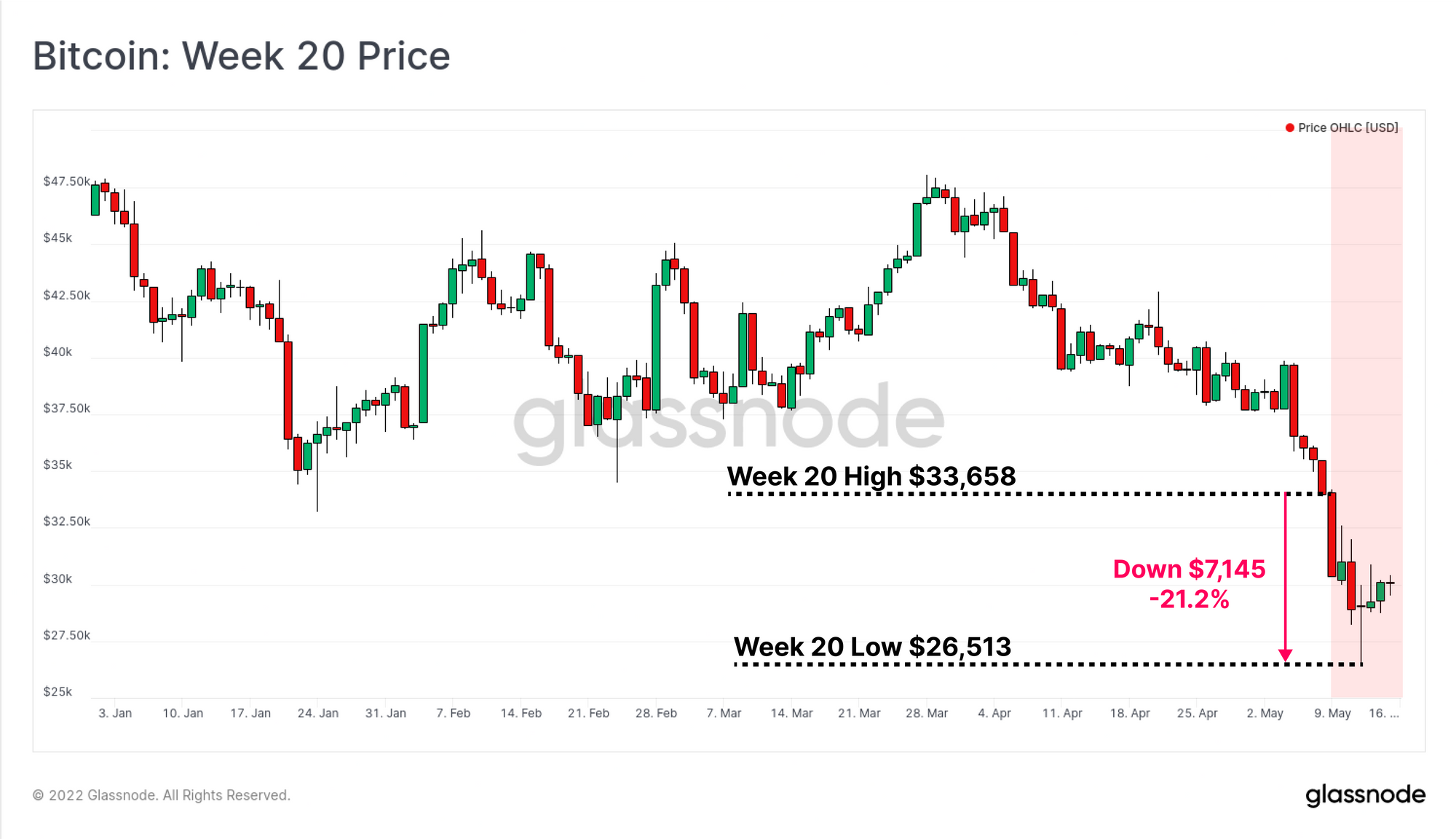Unstable Coins
The Bitcoin market experienced a week for the history books, with the $40B LUNA/UST project hyper-inflating and collapsing, 80k BTC sold by LFG, the Tether $1 peg coming under pressure, Stablecoin supplies contracting by $7.5B, and a near visit to the Realized Price

The cryptocurrency markets experienced a week of historic volatility and chaos, with the exchange rate for two stablecoins, UST and USDT taking centre stage. Over the course of just a few days, two top 10 digital assets by market cap (LUNA and UST) erased nearly $40 Billion in investor value. UST lost its $1 peg completely, and LUNA collapsed to a price of $0.00001 as its supply hyper-inflated. As a result, the Luna Foundation Guard (LFG) deployed their only recently established reserves of 80,394 BTC to defend the peg, although without success.
Later in the week, and on the momentum of UST de-pegging news, the market temporarily expressed fear over the quality of Tether's peg (USDT). USDT traded briefly down to a low of $0.9565, however recovered within 24hrs, currently trading at a very slight discount of $0.998.
Amidst the stablecoin contagion, and under the weight of $3.275 Billion worth of Bitcoin sold by the LFG, Bitcoin traded down 21.2% to $26,513. This is the lowest price since December 2020 and naturally puts much of the market under financial stress.
In this weeks newsletter we will cover these three key topics, namely:
- The UST and LUNA market dynamics, what happened to LUNA and UST supplies, and how the LFG Bitcoin reserves were deployed.
- The brief de-pegging of USDT, and how it affected the market perception of other stablecoins such as USDC, BUSD and DAI.
- Bitcoin prices traded down towards the Realized Price, which is historically a significant support level, and the markets observable reaction to this event.


